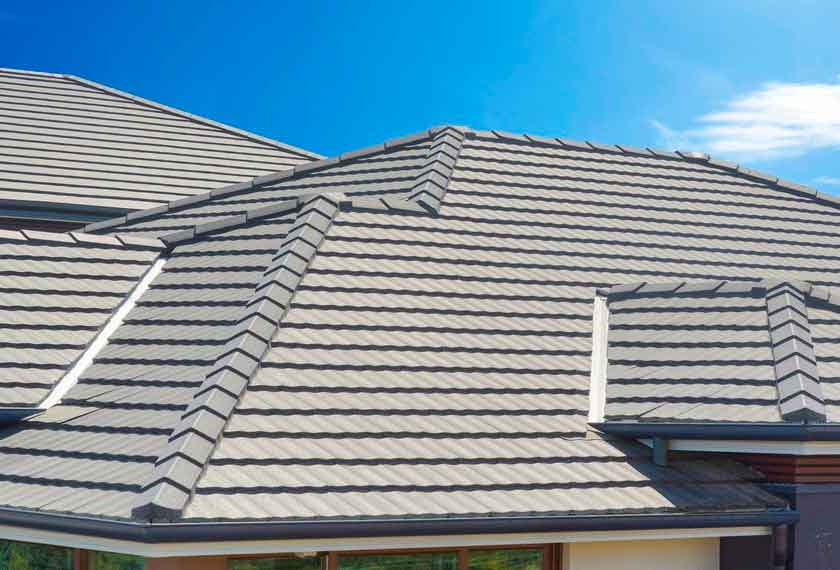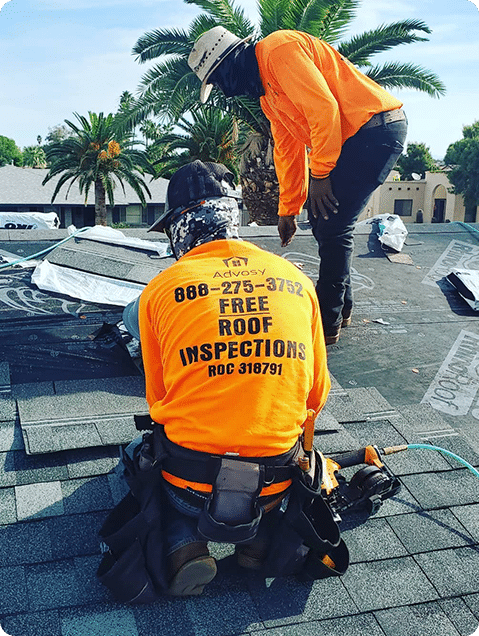Clay tiles are a popular roofing material for residential properties due to their attractive aesthetics and durability. Maintaining and repairing clay tile roofs requires specialized knowledge, as the process is complex and labor-intensive.
This article will provide an overview of key tips for maintaining and repairing clay tiles on a residential roof, including how to inspect them regularly, what maintenance steps should be taken, and when repairs may need to be carried out.
The life expectancy of any type of roof can vary depending on its environment, age, quality of construction materials used in the installation, frequency of inspections, and maintenance activities performed. Therefore, it is important that homeowners understand the importance of regular inspection and maintenance to ensure that they get the maximum benefit from their investment in clay tiles.
Additionally, understanding how to carry out basic repair tasks can help reduce unnecessary costs by avoiding unneeded professional services or delays caused by waiting for specialist contractors.
Understanding Clay Tiles
Clay tiles are a popular choice for residential roofs, as they provide excellent insulation and can last up to several decades if well-maintained.
Unlike other roofing materials such as asphalt shingles or metal sheeting, clay tiles require special handling during installation and repair in order to ensure their durability. Before attempting any maintenance on clay tile roofs, it is essential to familiarize yourself with the material and its properties.
Clay tiles consist of an interlocking pattern that allows them to form an impermeable barrier against wind, rain, snow, sunlight, dust, and pollutants. The composition of each tile also helps regulate the temperature within the home while providing superior sound absorption qualities.
Clay tiles come in various shapes and sizes depending on the manufacturer; however, all varieties must be installed correctly in order to maximize their longevity and performance. It is best practice to use mortar between individual tiles when replacing damaged pieces or making repairs which require precision cutting and fitting due to their unique shape. Additionally, applying sealant along edges where two tiles meet will help prevent water from seeping through crevices over time.

Regular inspections of your roof should be conducted annually to check for damage caused by weather conditions or heavy debris accumulation; this includes checking for broken or missing pieces as well as signs of mold growth or discoloration. If any issues arise during these inspections then immediate action should be taken including contacting a licensed contractor who specializes in clay tile roofing systems before further damage occurs.
Regular Inspections
Clay tiles are a popular choice for residential roofs, and with proper, regular maintenance they can last for many years. Understanding their composition is the first step to ensuring that these tiles remain in good condition over time.
Regular inspections of clay tile roofs should be performed by a qualified roofing contractor at least once every three years. This ensures early identification of any damage or wear so it can be addressed quickly and cost-effectively before more serious deterioration occurs.
During an inspection, all components of the roof will be checked carefully – from checking flashings around vents and chimneys to inspecting each individual tile itself. The contractor may recommend minor repairs as needed to ensure your roof continues to provide maximum protection against the elements.
Cleaning & Sealing
Cleaning and sealing clay tiles is a vital part of maintaining and repairing any residential roof.
Clay tiles require periodic cleaning to remove dirt, mold, moss and other debris that accumulates from exposure to the elements.
In order to clean them effectively, all loose material should be removed with a soft brush or broom before hosing down the roof with water.
It’s also important to use an appropriate cleaner for the specific type of tile; some cleaners are specifically designed for terracotta and may not work as well on other types of tile.
Once the tiles have been cleaned, they should be sealed in order to protect them from further damage caused by moisture seeping in through cracks and crevices.
A sealant can prevent water infiltration while helping keep out dust, dirt, and other particles that could cause deterioration over time.
Sealants come in various forms – liquid, paste or spray-on – depending on the surface being treated.
Be sure to follow manufacturer instructions carefully when applying sealants for optimal results.
To ensure maximum protection against weathering and wear, it’s recommended that clay tiles be resealed every three years or so.
Basic Maintenance
The importance of basic maintenance for clay tiles on residential roofs cannot be overstated. Regular upkeep is essential to ensure the longevity and aesthetic value of these tiles, and it should never be overlooked.
To begin with, one must inspect the roof regularly in order to identify any potential problems or damage that may have occurred since the last inspection. This can include checking for missing shingles or mortar joints, cracks in the tile surface, improper overlap between tiles, and other common defects such as water leakage at seams.
In addition to inspecting the roof, homeowners should also take steps to clean their clay tiles every few months. This helps prevent dirt build-up which can cause discoloration and deterioration over time. A solution of soap and warm water is usually all that’s needed; however harsher chemicals may need to be applied if there is significant staining or moss growth present on the surface of the tiles. It’s important not to use too much pressure when cleaning so as not to damage the fragile material beneath.
Afterward, a sealant should be applied to help protect against further moisture intrusion.
Ultimately, regular maintenance is key when it comes to preserving your clay roof’s beauty and integrity into the future – an investment well worth making!
Identifying Damage
Clay tiles are an attractive, durable material for residential roofs. They can last for decades with proper maintenance and periodic repairs. The key to keeping a clay tile roof in optimal shape is recognizing when it needs attention.
Inspecting the structure of your roof regularly will help you identify signs of damage quickly so that it can be addressed before any major issues arise. One telltale sign of trouble is missing or broken pieces from the tiles on the roof’s surface. If left unchecked, this type of damage can lead to increased energy costs due to air infiltration as well as water leakage into the home during rainy weather.
In order to prevent further deterioration, replace damaged tiles immediately with new ones that match the original design and coloration. Additionally, inspect all flashing around skylights, chimneys, and other protrusions for cracks or gaps which could allow moisture inside. Repairing these areas promptly helps maintain a waterproof seal against potential leaks.
Repairing & Replacing Tiles
Clay tiles are a popular choice for residential roofs due to their durability and attractive appearance. However, they can be susceptible to damage from extreme weather conditions or incorrect installation techniques. To ensure the longevity of clay tile roofs, it is important to understand how to maintain them as well as repair and replace damaged tiles when necessary.
When repairing existing tiles, it is essential that proper tools are used; repairs should only be done with a hammer, chisel, and trowel. The old mortar must also be removed before any new materials can be added.
For replacing broken or cracked tiles, a fine-toothed saw should be used to cut away the surrounding tiles in order to remove the damaged piece without damaging other parts of the roof. Once removed, a new tile can then be inserted into place using cement grout and appropriately sized nails. If more than one tile needs replacement, care must be taken to make sure all pieces match up properly so that water won’t penetrate beneath them causing further damage over time.
By taking these steps on an ongoing basis and being attentive to signs of wear and tear like discoloration or missing/cracked tiles, homeowners will keep their roofs looking good while avoiding costly repairs down the line. Of course, if there is significant damage present it may require professional help; however most basic maintenance tasks can easily be handled by following these tips.

Professional Services
Clay tiles are a popular choice for residential roofs due to their durability and attractive appearance. However, they require regular maintenance and may need repairs over time.
Professional services can be beneficial in keeping clay tile roofing looking its best and functioning properly. Roofers who specialize in clay tile repair have the experience and expertise to identify any issues that may arise with these types of roofing systems.
They can make recommendations on specific maintenance needs as well as provide advice on how often such tasks should be performed. In addition, they can perform more complex repairs when needed, ensuring the structural integrity of your home’s roof is retained while restoring it back to its original state.
If you suspect there are problems with your clay tile roof or simply want an expert opinion about its condition, contact a local professional service provider for assistance. With their help, you can keep your home’s roof looking beautiful and secure for years to come.
Conclusion
Clay tiles are a beautiful and long-lasting option for residential roofing, however, they require regular maintenance to protect them from the elements.
Inspections should be done regularly to identify any damage or wear that needs to be addressed.
Clay tiles need to be kept clean and sealed in order to maintain their durability.
Basic repair techniques such as replacing cracked, broken, or missing tiles can help keep roofs in good condition.
In more severe cases of damage, professional services may be needed for proper repairs or replacements.
Maintaining clay tile roofing is essential for preserving its beauty while also ensuring it provides reliable protection over time.


